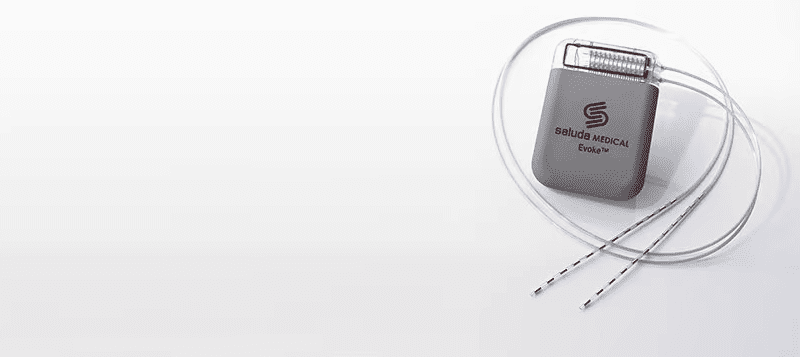With the opioid epidemic still raging throughout the U.S., the scramble to find drug-free alternatives for chronic pain treatment continues. The latest candidate in that search comes from Saluda Medical and uses spinal cord stimulation—rather than prescription medication—to lessen the effects of intractable pain in the trunk and limbs.
Results of several studies of the closed-loop Evoke system have been so promising, in fact, that the FDA recently opted to approve the technology for chronic pain treatment. According to the company, this marks the first time the agency has handed down premarket approval to a spinal cord stimulation system based on the results of a double-blind, randomized controlled trial.
With the approval under its belt, the former Fierce 15 winner will begin a limited rollout of the system among several of its clinical trial sites in the second half of this year. A full commercial launch will follow in 2023.
Unlike many other spinal cord stimulation devices currently on the market, Saluda’s technology is a closed-loop system, meaning it’s capable of self-regulating the therapy it delivers rather than requiring external adjustments. It does so by measuring spinal cord activation in real time and continuously determining whether changes are needed to optimize pain relief.
The system makes its own adjustments at the same frequency as the electrical pulses it delivers—which can be more than 100 times per second.
“The FDA approval of the Evoke System marks a seminal moment in the field of spinal cord stimulation,” said Timothy Deer, M.D., a investigator for the device’s clinical trial and president and CEO of the Spine and Nerve Center of The Virginias. “For the last 50 years, our field has relied on subjective feedback from the patient to optimize therapy, with results in published literature demonstrating good clinical outcomes, but also highlighting challenges with predictable long-term durability.”
In the clinical study that led to the FDA approval, the Evoke system outperformed its open-loop competitors by providing superior pain relief after one year of treatment with virtually no increase in pain medication. The device was also able to maintain spinal cord activation throughout more than 95% of the therapeutic window compared to less than 50% of the time with the open-loop systems.
At the one-year mark, the majority of patients implanted with the Evoke system reported clinically meaningful improvements not only in their pain levels but also in their mood states, sleep quality and overall health-related quality of life—with more than 85% of patients showing significant improvements in the latter category.
And those results appear to hold up: In newly published long-term data from the study, after two years, none of the devices had been removed because they stopped working. Additionally, most patients no longer require reprogramming for the devices after the first year, with the data showing a median of zero visits per patient per month between the 12- and 24-month marks.

